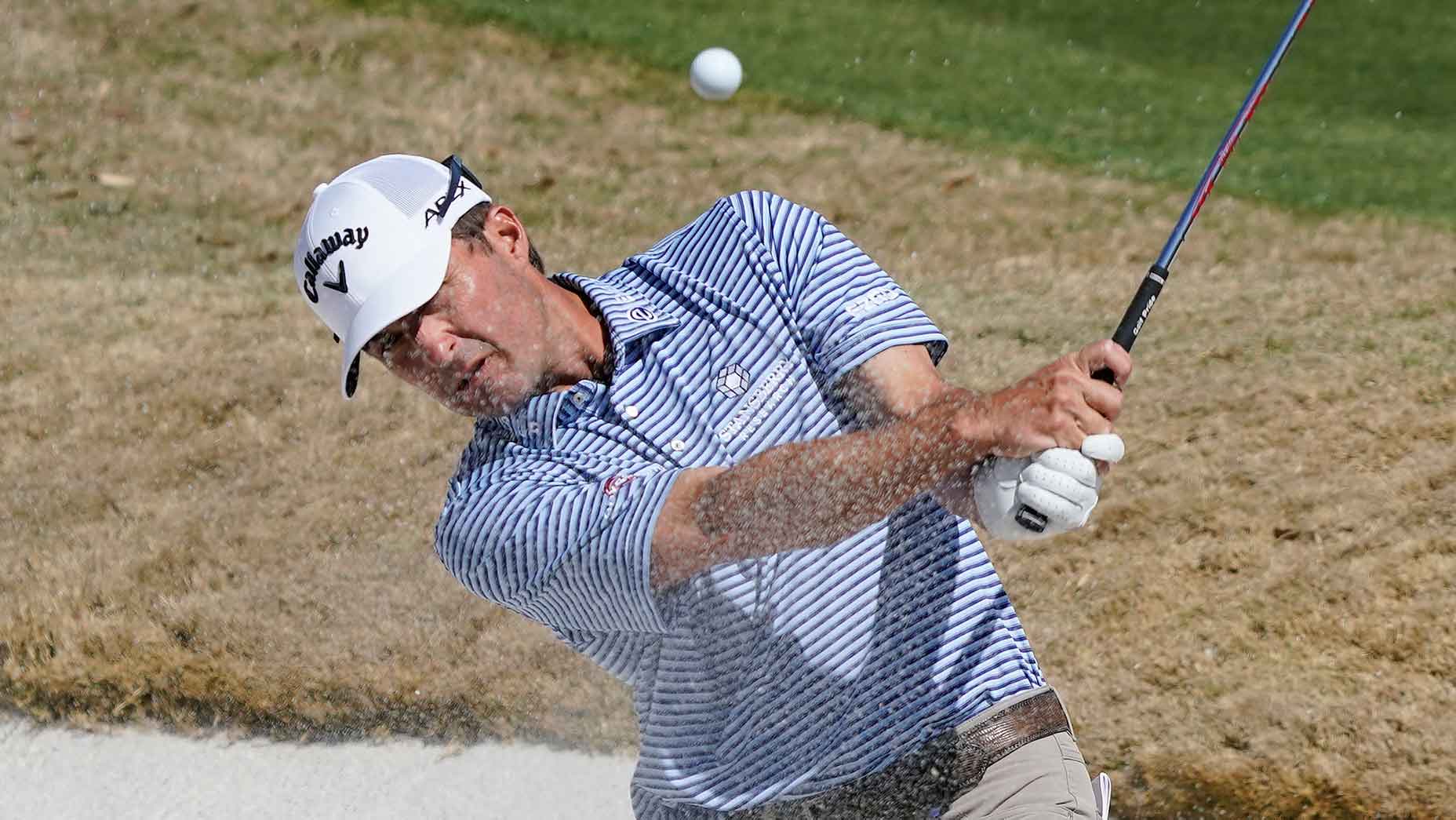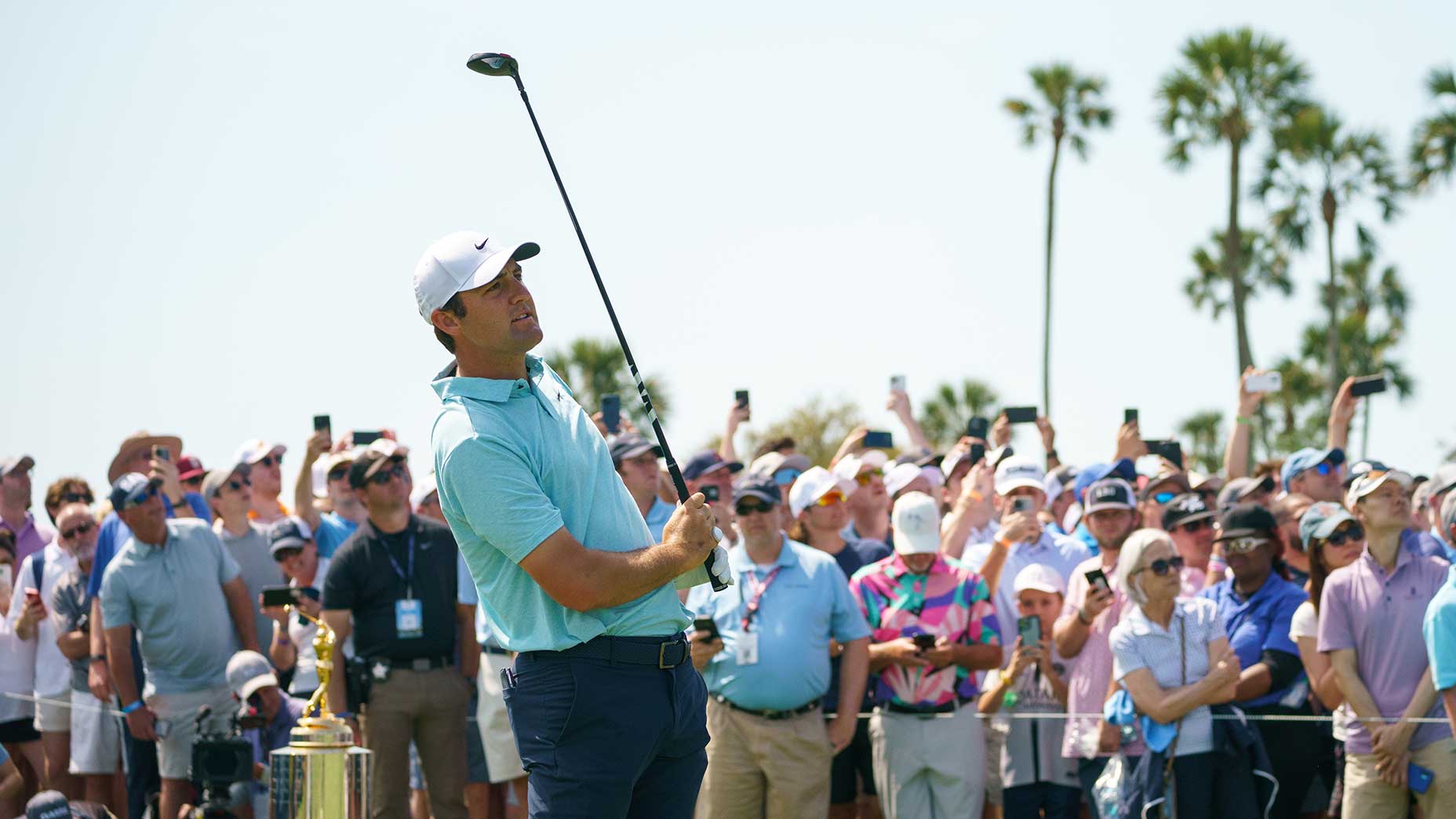
Kevin Kisner hits his third shot on Saturday morning on the 16th hole at Austin Country Club. He holed the shot for an eagle.
Getty Images
Kevin Kisner is as confident as they come in match play, and on Austin Country Club’s course, but even he had to believe that, facing a deficit over 200 players have tried and failed to overcome, he was toast, too.
Right, Kis?
“Well, it’s not looking good,” he said afterward.
And there it is. If you’ve wondered why Kisner is one of the best one-on-one players of his generation, and why he’s so successful at the WGC-Match Play, and why he’s been so good at Austin CC (a reporter even jokingly asked him if he’s ever considered writing a book for members), it’s this:
‘Well, it’s not looking good’ is about the closest you’ll get to an early concession from the 36-year-old South Carolinian. Still, there Kisner was during his Saturday morning round of 16 match against Adam Scott, down three holes with four to go, and history says it was actually looking bad.
In a mind-blowing stat from data guru Justin Ray of the Twenty First Group, 228 players had faced that deficit or greater at Austin CC after the Saturday round of 16 — and went 1-221-6. You can probably guess the ‘1.’ (After the quarters, it dropped to 1-222-6, but more on that in a sec.)
On the par-4 15 against Scott, Kisner stuffed a wedge to 4 feet and birdied. He was two down with three holes to go.
“That definitely changed the momentum, hitting a wedge in there to 4 feet,” Kisner said. “He hit a great shot to probably 9 or 10 feet and hit a great putt, just missed it on the high side, and for me to make that, I knew on 16 that I had the advantage because he had a terrible lie down in the rough and I was in the bunker.
“Kind of felt like the momentum was switching my way.”
On the par-5 16th, as Kisner alluded to, from a greenside bunker, he holed out for an eagle three. He was one down with two holes to go.
“I told my caddie right before I hit it, I said, we can use that wind to fly it right in the hole, I think, and it came out just perfectly and slowed down with the wind, and I couldn’t see it go in, but he said it trickled in like a putt,” Kisner said. “Those are things you dream about.”
On the par-3 17th, Kisner parred and Scott three-putted from the fringe. The match was all square. On the par-4 18th, each player was under 50 yards away after their tee shots, Kisner hit to 7 feet, Scott to 40, and Kisner birdied and Scott parred.
And that was that. In the afternoon quarters, Kisner defeated Will Zalatoris 4 and 3 — like Kisner earlier, Zalatoris would have also needed to rally from a three-plus hole deficit to win — and on Sunday morning, Kisner will play Corey Conners in the semifinals. The winner will play whoever advances between Dustin Johnson and Scottie Scheffler.
Should Kisner win there, it would be his second WGC-Match Play crown, and it’s fair for you to (still) wonder how he’s getting it done. Even he admitted the day before that he’s “5-10 and 160 pounds; I’m pretty much an underdog out here.” So what gives? For one, it’s the format. “I liken it to trying to win a golf tournament in every match,” he said. “I really love being in contention on Sunday in a stroke-play event. If I’m teeing off in 30th, it’s hard for me to get really into it. Out here, it feels like Sunday every day, which is a lot of fun.”
Austin CC is also big here. Or not big. “I don’t feel like I’m behind the 8-ball on the first tee from a distance standpoint,” Kisner said. “I haven’t played a single person yet in five matches that hits it anywhere remotely close to the same distance as me. I’ll give you an example: On 11 tee, I tried to cut a 6-iron and Will hit a 9-iron and flew it past my ball. In a lot of events, I’m dead in the water. I’m behind the 8-ball before I tee off. I love that I can work the ball, use slopes, use the firmness of the fairways and the greens to help me.”
But maybe to best understand why Kisner is a match for match-play, listen to what he told reporters after he said, “Well, it’s not looking good.”
“But I don’t ever give up. I knew I needed to make some birdies. I knew I needed him to start thinking about it.
“That’s what I’m always trying to do is get the opponent to think about what I’m doing instead of what they’re doing, and I was able to do that, I think, when I holed that bunker shot on 16.”











